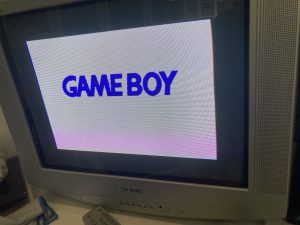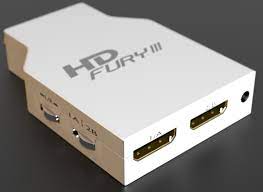AV Guides, Howto & Guides
Is OSSC the worlds best transcoder?
Throughout the analogue video age, the two competing standards of RGB and YpbPr caused plenty of confusion for consumers. Both standards aimed to carry high quality video and audio but are inherently incompatible with each other. Since you may easily run into a situation where your device supports one standard but your display only supports the other, converting between the two formats is something many people will need to do.
A device which converts between the two formats is called a “transcoder”. Over the years, several have been available on the market, with the very best available being the RetroTINK RGB2Comp and Comp2RGB devices, which are available in our store. For the majority of cases, these affordable little boxes will work fantastically, but unfortunately not always.
Purple Problems

For whatever reason, every basic component to RGB transcoder on the market suffers from the purple tint issue. At certain times, particularly where the picture transitions from dark to bright, the converted picture will have a purple tint across part or all of it. Older transcoders were particularly prone to this and it was thought to be eliminated with the Comp2RGB, but unfortunately it can still rear its ugly head in some instances.
If you run into this problem, what can you do? Well, why not just use your OSSC as a transcoder? The OSSC was designed to be a flexible analogue to digital converter. While the device is great for converting 15khz to 31khz, it also has a “pass through” mode for all formats, including 240p.
For a console like the PlayStation 2, for instance, you can simply transcode the consoles 480i output to digital 480i via HDMI. This can and often does, give better results than connecting to your televisions component video inputs, which may route the signal through an internal analogue to digital conversion that adds more lag or other undesirable consequences. OSSC can also convert /process sync on green signals from PS2 480p games if that’s more convenient for your setup.
Analogue Transcoding

One of the most popular uses for transcoders is on classic CRT displays. Many classic multisync monitors don’t have component video inputs. Many classic CRT televisions from Europe only have RGB SCART inputs. Of course, these displays don’t have HDMI either, that’s where a HDMI to VGA converter comes in.
Pairing the OSSC with a good quality digital to analogue converter, such as a HD Fury adapter, turns the device into a super powerful video converter and processor for CRT monitors. Doing a conversion from analogue to digital back to analogue again might seem like video circumlocution (or in other words, a bit of a faff) but since there’s no lag added at either step, it works very well. In fact, many converters on the market actually do this kind of analogue->digital->analogue conversion internally.
Once you connect your OSSC to your CRT monitor like this, it will happily transcode or upscale any component video signal to RGB. On a multisync monitor you can simply set all signals to passthrough mode, while on a 31khz only display, like a typical VGA monitor, you can line double 15khz signals while passing through the rest. You can use the OSSC and your original Xbox or Gamecube console like this to run those classic 480p compatible titles on your VGA monitor. Remember, using RGB SCART from these consoles ties you to 15khz modes, much better to get native 480p from the consoles component video output if possible and, with the OSSC, you get no purple tint, guaranteed.
Using an OSSC, you also get other advanced options that might be useful, such as the ability to set the output signal to 640×480 or 480p DTV (720×480), which should help most displays display the correct aspect ratio. You also have the ability to change backporch settings which can be used on some displays to centre the image.
Connecting the OSSC like this to a SCART CRT television is a little more complicated. You will need an adapter to go from VGA to SCART (most likely with a sync combiner in it) and you will need to make sure the OSSC is set to pass-through mode for 240p and 480i. Since the OSSCs test pattern is displayed in 480p, you should turn on your console first and have the OSSC automatically select the input, to avoid displaying 480p content on a 15khz only display. Clearly OSSC might not be the most suitable device for a setup like this though if you are having the dreaded purple tint issues and you have a spare OSSC lying around, it still might be worth considering.
Should I really buy an OSSC just to transcode?
While the OSSC is much more affordable these days, using a device like this purely as a transcoder is an expensive proposition, especially as good quality HDMI to VGA converters can also be expensive (and the quality of budget ones varies a great deal). The old adage “you get what you pay for” applies here though, and particularly if other solutions have failed you, the OSSC plus HDMI to VGA converter combo might be exactly what you need.
With new devices like the OSSC Pro and RetroTINK 5x now taking the crown as the definitive scalers in a high end gaming setup, your “humble” OSSC might get tossed into a cupboard and overlooked, but clearly it can still be a powerful and useful device to keep around in your AV toolbox.


Here’s a thought: what about CRTs that ONLY support composite video? Almost every CRT I ever used generally only offered composite and maybe S-video as an input. CRTs with component inputs were luxuries. Could the OSSC be paired with something like a HDMI to AV converter to convert a 240p RGB or YPbPr signal to composite?
That would almost certainly be overkill, you would be better off finding a simple component to s-video transcoder.